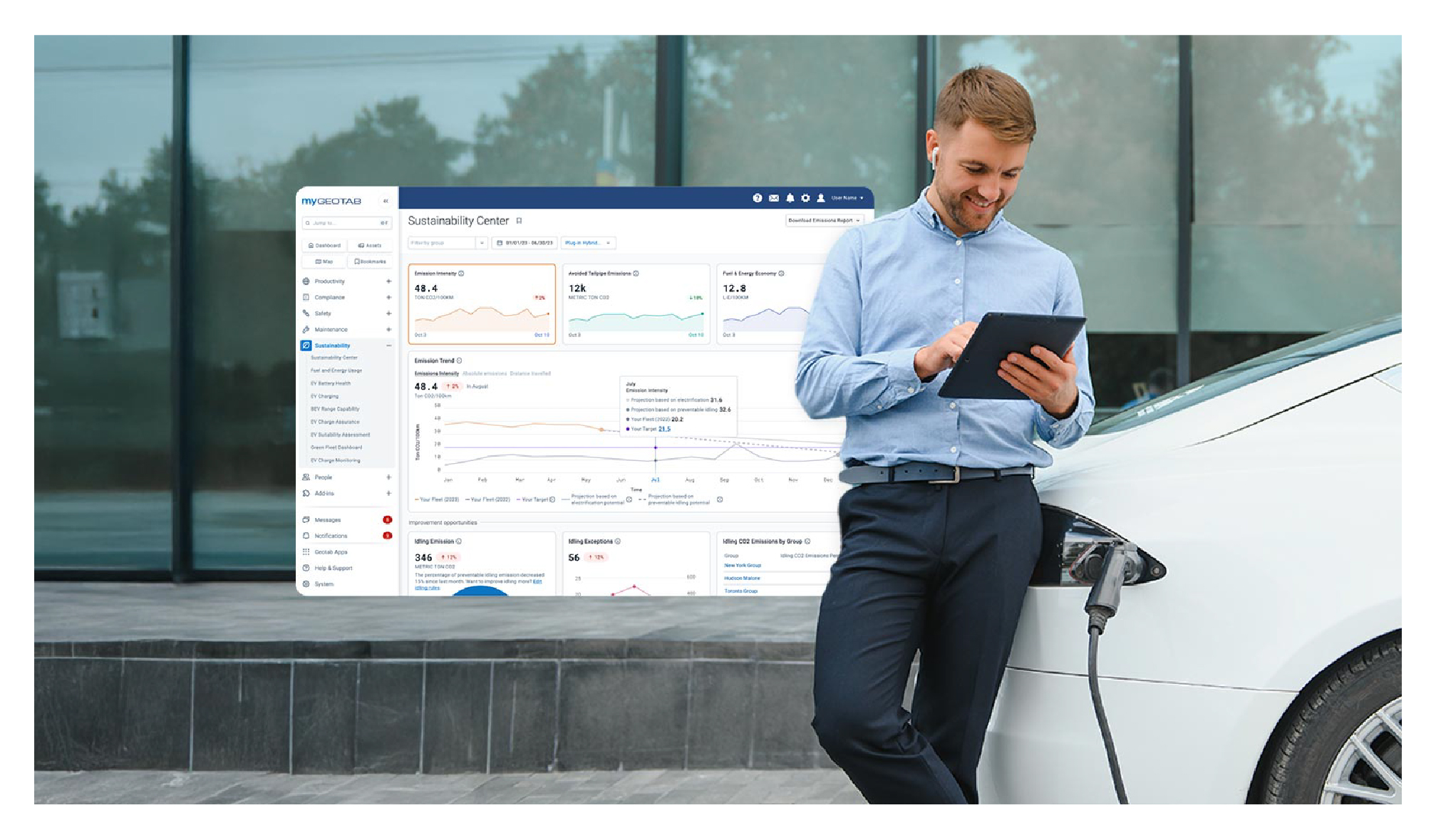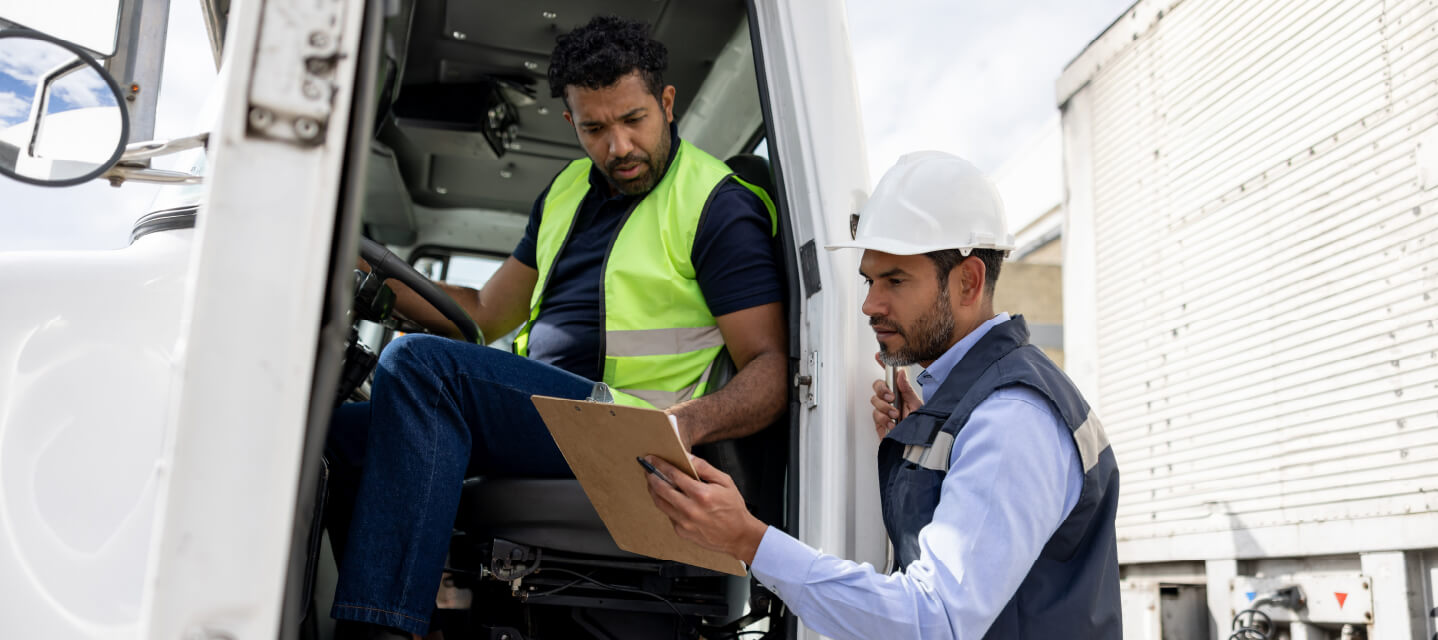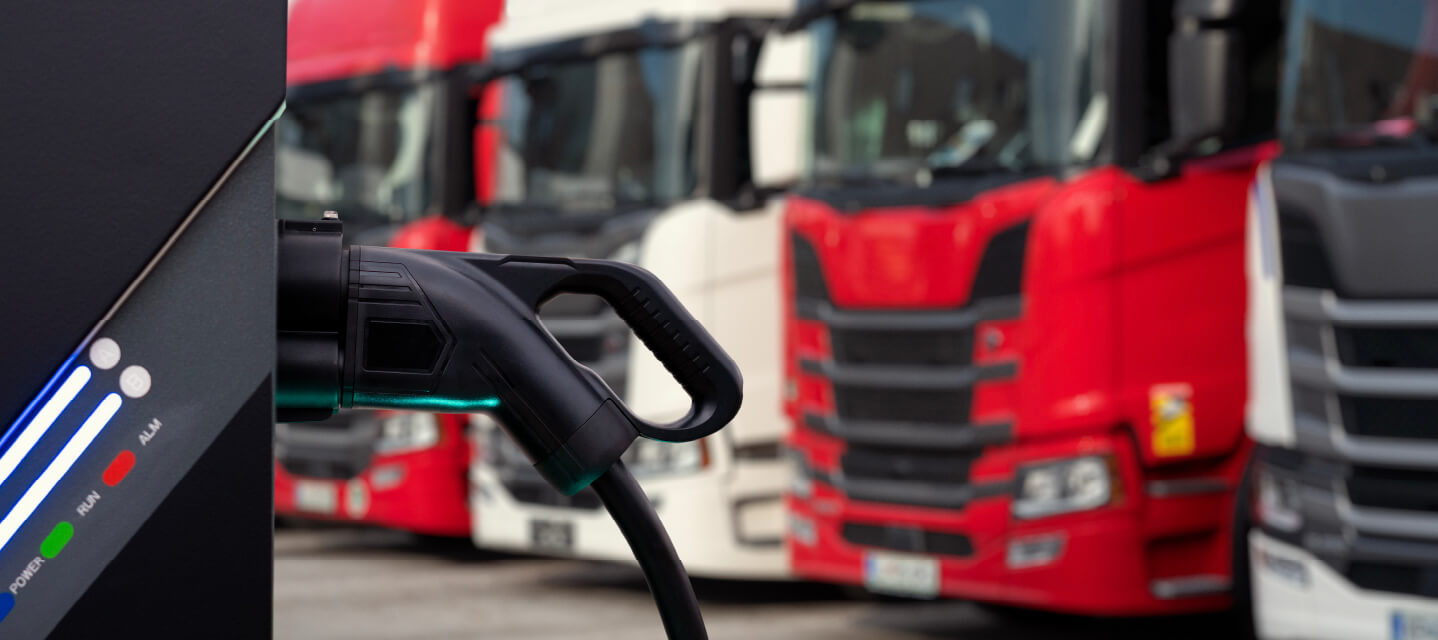The art of the possible: Insights from Geotab’s “Taking Charge” Report
Explore Geotab's report on the EV transition potential for light-duty fleets and the environmental and financial benefits.

By Paul Kirby
LCV & EV Consultant
Jun 20, 2024
Updated: Aug 27, 2024

In this blog post, Paul Kirby, our resident eLCV expert, and founder of the EV Café, shares his thoughts on Geotab’s report, ‘Taking Charge: On the Road to the EV Future’. Data from over 1.3 million vehicles was analysed, revealing the untapped potential for light-duty fleets to switch from internal combustion engines (ICE) to EVs.
“As anyone who knows me knows, I’m not a fan of data. Data annoys me until it’s actually translated into insight. I welcome this “Taking Charge” report because it takes a mass of data, does a load of crunching, and presents me with opportunities, options, possibilities… In short, insights!
By analysing data from 1.3 million vehicles across seven countries, it showed that we have the potential to save a massive 19 million metric tonnes of CO2 emissions in the next seven years, if we were to grasp the opportunities that it presents.”
What did the report look at?
“We looked at the percentage of vehicles that could be replaced with a range-capable BEV.
We also asked the question - would a fleet save money? And if so, what would the financial savings be? How much fuel can be saved, and what emissions would be avoided?
We also looked at average daily mileage, as well as the longest journeys. All of this data told us that many, many vehicles could be transitioned to electric.”
Focusing on the UK
“Many UK fleet managers will be asking the question: “Can we switch to electric and save money?” The summary answer from this report is a resounding “Yes.”
Then they’ll commonly ask: “Is it operationally practical to transition to electric?” While there are some fleets that have relevant reasons not to make the switch yet, the report shows that there’s a significant potential for fleet electrification in the light commercial vehicle sector.
Reviewing the UK fleet based on a seven-year cycle, and looking at vehicles that could do the full day’s duty on a single charge, we identified potential savings of £7,300 per vehicle that was able to go electric. That was based on the current market rate for energy costs, albeit not public costs. Each vehicle could also save a massive 17,100 litres of fuel, avoiding 39 tonnes of CO2 emissions.
The average daily mileage was only 58 miles, and the maximum daily distance in the analysed vehicle pool was 287 miles. Nearly half of all these vehicles never exceeded 250 miles on a single day.”
The context in the current UK market
“We’ve already got vehicles in the small, medium and large vans sector that will cover around 200 miles or more. Three vehicles are hitting the market right at this moment (as of May 2024) that will do over 250 miles in the large van sector. There are a number of vehicles in the medium van sector that will do between 200 and 230 miles. And even in the small vans sector, we have a vehicle that will top 250 miles in the VW ID Buzz.
Now, let’s consider the legislative landscape. The Zero Emission Vehicle (ZEV) mandate dictates that just 10% of vehicles produced in 2024 must be electric. I say “just” in the context of this report since it’s clear that we’re capable of switching a far greater proportion of vehicles than this. However, the targets ramp up year on year and by 2030, 70% of all new vehicles registered must be electric for manufacturers to avoid fines of £18,000 per vehicle. This report shows that the UK light duty fleet is more than capable of meeting the ZEV mandate, currently.”
Electrification potential by vocation
“We also looked at the types of fleets that were able to electrify, and the toughest are the regional, long-distance fleets. These vehicles are typically doing over 150 miles per day, and aren’t travelling to any specific destination.
In contrast, the three vocations that the report shows to be relatively easy to electrify are hub-and-spoke (makes multiple round trips from a singular location or centralised hub), door-to-door (makes significantly more stops than most and tends to spend very little time per stop) and local (remains within an area of 150 miles, but is neither door-to-door nor hub-and-spoke).
Door-to-door, including deliveries and the local parcel sector, is probably the easiest to electrify. With the hub-and-spoke vocation, this opens us up to housing associations, engineering, utilities, repair and maintenance and facilities management fleets.”
Final thoughts
“We’re entering an exciting time for electrification. One where the art of the possible has been uncovered. This report shows us that we can achieve far more than we thought we could, and it gives us the data to prove it. It even shows us the ideal types of fleet in which we should be looking to make the transition.
And with the Geotab ecosystem, you have everything you need to make informed decisions and to get the right vehicles, right charging and right surrounding ecosystem to help you on every step of your journey.”
Subscribe to the Geotab Blog

LCV & EV Consultant
Paul has widely championed the efficient and safe operation of Light Commercial Vehicles and has worked in the space for nearly 20 years.
Table of contents
Subscribe to the Geotab Blog
Related posts

Geotab’s new fleet Sustainability Center simplifies fuel and emissions reduction
June 13, 2025
3 minute read

What Is fleet management? A complete guide for fleet managers
June 13, 2025
5 minute read
.png)

.jpeg)

